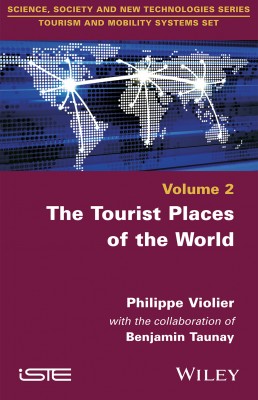
Formerly a largely Western practice, “leisure travel” is today the most dynamic industry in the world in terms of growth. Developments in transport and communication systems mean tourism is now an integral part of our understanding of the world, and involved in the exponential increase of links between societies and different cultures.
The Tourist Places of the World has comprehensive data on the number of international visitors annually. It also includes an original map ? not dictated by country, but by major tourist areas and places. The hierarchy of destinations drawn is highlighted by the different levels of popularity and passenger flows; from the universal places where all societies meet to the still unfrequented places.
Beyond the recognition of global tourism, the challenge is to understand how and why societies can achieve a better life through sustainable development, which encompasses social, economic and environmental dimensions.
1. An Overview of the Tourism World.
2. North America.
3. Central America.
4. South America.
5. Central and Northern Europe.
6. The Mediterranean Basin.
7. Sub-Saharan Africa.
8. Western Asia.
9. Southeast Asia.
10. Northeast Asia.
11. Oceania and the Pacific Islands.
Philippe Violier is a Professor of Geography and a member of the Spaces and Societies Laboratory at the University of Angers, France. He is also Director of the university’s Tourism and Culture faculty.
Benjamin Taunay is a member of University of Angers’ Spaces and Societies Laboratory, as well as a geographer, lecturer, and currently seconded to the French Ministry of Europe and Foreign Affairs.